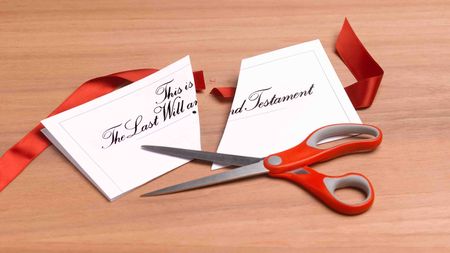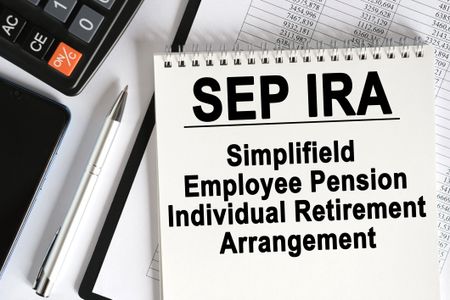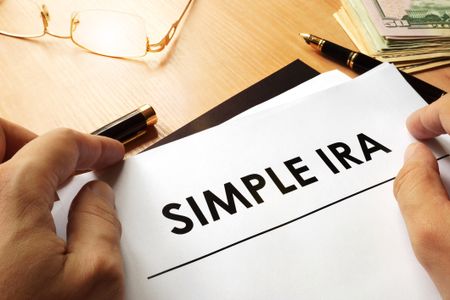7 Myths About Roth IRA Conversions
Some “expert” advice about whether you should switch is simply wrong.

The hot topic in planning for retirement these days is the special deal Congress is offering to encourage taxpayers to convert traditional IRAs to the Roth variety. You know the big advantage: Money that comes out of a Roth in retirement is tax-free; cash from a regular IRA is taxed in your top tax bracket.
With such a powerful payoff, it’s no wonder that the price of admission is steep. When you switch from a traditional IRA, you have to pay tax on any as-yet-untaxed money you move to the Roth (and for most taxpayers, that’s 100% of the converted amount).
To help investors overcome their innate aversion to paying taxes, Congress concocted a tempting deal. For 2010 conversions -- and 2010 conversions only -- you don’t have to pay the piper right away. Instead, you may report half the conversion income on your 2011 tax return and the other half the following year.

Sign up for Kiplinger’s Free E-Newsletters
Profit and prosper with the best of expert advice on investing, taxes, retirement, personal finance and more - straight to your e-mail.
Profit and prosper with the best of expert advice - straight to your e-mail.
This is also the first year that many IRA owners who can actually afford to switch to a Roth are allowed to do so. Prior to 2010, Roth conversions were forbidden fruit for anyone with adjusted gross income over $100,000. That restriction is now gone. Unfortunately, all the attention on Roth conversions comes with an avalanche of misinformation. Read on as we debunk seven myths making the rounds.
MYTH 1. It takes years for a conversion to pay off. We’ve seen elaborate mathematical support for the proposition that if you’re already retired -- or you’re within a few years of retirement – it’s unlikely you’ll benefit from converting. The reasoning is that it will take years for tax-free earnings inside the Roth to match the tax bill you have to pay going in. That seems logical. After all, it’s likely to cost $25,000 or more to convert a $100,000 IRA.
But remember that the tax bill on the conversion is a bill that you (or your heirs) will have to pay someday, even if you stick with the traditional IRA. Unless switching to a Roth pushes you into a higher tax bracket than you would be in when withdrawing taxable amounts from the traditional IRA, a conversion is “break-even financially from day one,” points out James Lange, an attorney, CPA and IRA expert in Pittsburgh. All else being equal, you’re ahead of the game with a Roth starting on day two because tax-free earnings are better than tax-deferred earnings.
But if you pay taxes on a conversion at a higher rate than you would have owed on traditional IRA withdrawals, it does take time for tax-free earnings to overcome that disadvantage. Just how long depends on the difference in tax rates and the performance of your investments, so making the switch may not make sense.
MYTH 2. Reporting income from a conversion will wipe out any chance your child will get college financial aid. Sure, colleges take a close look at your tax return when calculating how much help to give your kids. But aid administrators aren’t idiots, and they have the leeway to ignore an anomaly -- such as a Roth conversion -- that makes you look richer than you really are. So be sure the college knows what’s going on. [See our Ask Kim column on the Impact of Roth Conversions on Financial Aid.] If you’re covered by Medicare, though, you are in a bind. A conversion-induced income spike could indeed push up your Part B premium for the following year. [See another Ask Kim column on Health Care Reform's Impact on Roth Conversions.]
MYTH 3. This is the only year you get the chance to spread Roth conversion taxes over more than one year. Although 2010 is the only time you can pay nothing in the year of the conversion -- and then pay the tax in equal shares the following two years – there’s nothing to stop you from gradually converting regular IRAs to Roths over any number of years you choose. For example, if you convert $500,000 in equal chunks over five years, you’d report $100,000 each year and spread the tax over five years, too. Just remember that the sooner the money is in the Roth, the sooner earnings are tax-free rather than simply tax-deferred.
MYTH 4. After you convert, you can’t touch your money for five years. This canard grows out of a widespread misunderstanding of the admittedly convoluted way Roth withdrawals are taxed. To withdraw earnings from a Roth tax-free, it is true that the account must have been open for at least five years. But earnings are the last thing to come out of a Roth.
The IRS assumes that the first money withdrawn comes from annual contributions you made (and this money can be tapped tax- and penalty-free at any time). Next, you dip into converted amounts (always tax-free -- and penalty-free, too, if you are older than 59 1/2 or the account has been open for at least five years). Only after you retrieve all of your contributions and converted amounts do you touch earnings -- and if at least five years have passed, the earnings are tax- and penalty-free. So, if you convert $100,000 today, you can withdraw it all tomorrow tax-free. The 10% early-withdrawal penalty disappears once you reach age 59 1/2 or the account has been open for five years, whichever comes first. [See our Ask Kim column on Tax Rules for Roth Withdrawals.]
MYTH 5. You can’t spread the tax bill over three years by reporting part of a conversion in 2010 and the rest in 2011 and 2012. Well, yes you can, if you’re married and both husband and wife convert. The law gives taxpayers who convert this year a choice: Report and pay tax on 100% of the conversion on your 2010 return, or report 50% of the income on both your 2011 and 2012 returns. But if you’re married and both you and your spouse convert IRAs, one spouse can use option A and the other option B -- and spread the family’s conversion tax bill over three years.
MYTH 6. A Roth IRA conversion is irreversible. Nothing could be further from the truth. If you convert in 2010, you have until October 15, 2011, to change your mind. You might want to do so if, say, you can’t bring yourself to pay the tax on your IRA sooner rather than later, or you think you’ll probably be in a lower tax bracket when you retire, or the account has lost value. In the last case, undoing a Roth conversion lets you avoid paying tax on money that has disappeared. If you “unconvert” before you file your tax return, you don’t have to pay the tax at all. If you change your mind after you file your 2010 return and pay tax on the switch, you can get your money back by filing an amended return.
MYTH 7. You can’t win if you pay the conversion tax with IRA money. There’s no doubt that you’re better off if you can come up with the cash without tapping your nest egg. Using outside money to pay the tax bill effectively lets you shift money from a taxable account into a tax shelter and lets you keep more inside the Roth to enjoy glorious tax-free earnings. But using IRA money for the government’s share doesn’t necessarily make a conversion a bad deal.
Let’s say you convert a $100,000 IRA and use $28,000 of the nest egg to pay taxes on the switch. (This assumes you’re at least age 59 1/2 so you’re not hit with the 10% early-withdrawal penalty on the funds not converted.) If the account earns 6% a year, it will hold $128,941 ten years down the road. It’s all yours. If you don’t convert, your $100,000 IRA would grow to $179,084. But if you’re still in the 28% bracket, 28% of the money is Uncle Sam’s. Peel off his share and you have the same $128,941. (This example ignores state income taxes, but if state tax rates don’t change, neither would the outcome.)
Add other advantages of a Roth -- tax-free withdrawals in retirement can’t increase the tax bill on Social Security benefits, no mandatory withdrawals starting at age 70 1/2 (as with traditional IRAs), and anything left to your heirs goes to them tax-free rather than being taxed in their top bracket -- and it’s clear that a conversion can make sense even if you have to use IRA money to pay for it.
Get Kiplinger Today newsletter — free
Profit and prosper with the best of Kiplinger's advice on investing, taxes, retirement, personal finance and much more. Delivered daily. Enter your email in the box and click Sign Me Up.

-
 Stock Market Today: Dow Sinks 715 Points as Inflation Unrest Grows
Stock Market Today: Dow Sinks 715 Points as Inflation Unrest GrowsInflation worries are showing up in both hard and soft data.
By Karee Venema Published
-
 What the Senate's Vote to Repeal CFPB Bank Overdraft Fees Cap Means For You
What the Senate's Vote to Repeal CFPB Bank Overdraft Fees Cap Means For YouThe Senate voted to overturn the Consumer Financial Protection Bureau's cap on overdraft fees. Here's what you need to know.
By Sean Jackson Published
-
 457 Plan Contribution Limits for 2025
457 Plan Contribution Limits for 2025Retirement plans There are higher 457 plan contribution limits for state and local government workers in 2025. That's good news for state and local government employees
By Kathryn Pomroy Last updated
-
 Medicare Basics: 11 Things You Need to Know
Medicare Basics: 11 Things You Need to KnowMedicare There's Medicare Part A, Part B, Part D, Medigap plans, Medicare Advantage plans and so on. We sort out the confusion about signing up for Medicare — and much more.
By Catherine Siskos Last updated
-
 The Seven Worst Assets to Leave Your Kids or Grandkids
The Seven Worst Assets to Leave Your Kids or Grandkidsinheritance Leaving these assets to your loved ones may be more trouble than it’s worth. Here's how to avoid adding to their grief after you're gone.
By David Rodeck Last updated
-
 SEP IRA Contribution Limits for 2025
SEP IRA Contribution Limits for 2025SEP IRA A good option for small business owners, SEP IRAs allow individual annual contributions of as much as $69,000 in 2024 and $70,000 in 2025..
By Jackie Stewart Last updated
-
 Roth IRA Contribution Limits for 2025
Roth IRA Contribution Limits for 2025Roth IRAs Roth IRA contribution limits have gone up. Here's what you need to know.
By Jackie Stewart Last updated
-
 SIMPLE IRA Contribution Limits for 2025
SIMPLE IRA Contribution Limits for 2025simple IRA The SIMPLE IRA contribution limit increased by $500 for 2025. Workers at small businesses can contribute up to $16,500 or $20,000 if 50 or over and $21,750 if 60-63.
By Jackie Stewart Last updated
-
 457 Contribution Limits for 2024
457 Contribution Limits for 2024retirement plans State and local government workers can contribute more to their 457 plans in 2024 than in 2023.
By Jackie Stewart Published
-
 Roth 401(k) Contribution Limits for 2025
Roth 401(k) Contribution Limits for 2025retirement plans The Roth 401(k) contribution limit for 2025 increased, and workers who are 50 and older can save even more.
By Jackie Stewart Last updated